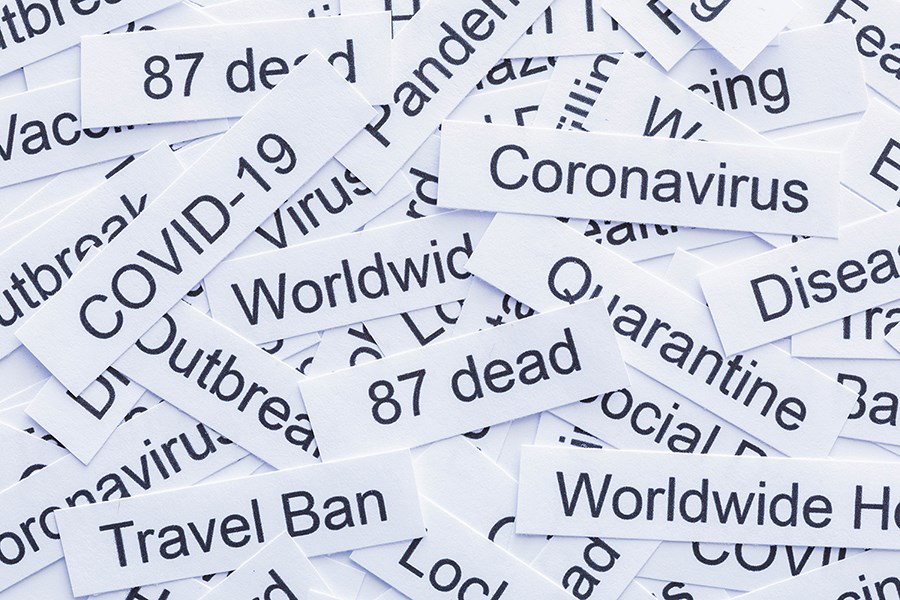No doubt many Canadians remember drinking from school water fountains long before students carried water bottles. When the school day began, some elementary students would rush to get a drink while the other children queued in an orderly fashion.
Learning about queuing culture was a major lesson for students in elementary school. There were, of course, different queues for different school activities. The big boy who pushed others out of the way at the fountain couldn’t push his weight around in English class or math class.
Mastering the rules for queuing was a necessary, but often harsh, lesson for young students. But it definitely helped children become mature adults.
The adult world is full of queues: waiting for a stop light to change, making an appointment at a dental office, lining up at the grocery checkout counter.
Over the last few months of the COVID-19 crisis, Prime Minister Justin Trudeau, provincial premiers and health-care officials have made it clear that Canadians should stay home, physically isolating.
As a result, many Canadians have lost control over their lives. Increasingly, they feel helpless and demoralized because they can’t control where they go and who they see.
Social psychologists tell us that humans find the loss of personal control almost impossible to endure, especially when it’s forced. In attempting to deal with the pandemic, government officials have created rules that run counter to our nature, undermining the freedom we Canadians value.
As spring warms into summer, it’s increasingly difficult to force people to quarantine themselves. Human nature rebels against this state-imposed demand.
People feel the need to visit garden centres, have coffee at a cafe or take their children to the playground. When people begin feeling the warmth of the sun, they begin doing things that will challenge the state’s authority. Living in isolation and allowing the state to control one’s life is unnatural and anti-democratic. It can’t last forever.
So why didn’t government and health officials use a queuing strategy, something that every Canadian learned in elementary school, to better manage the process of Canadians re-entering mainstream society?
Within a month of ordering Canadians to quarantine themselves, officials knew that some people were at much higher risk than others. People under 20 had very low risk of getting sick, people between 20 and 65 had a risk that was about the same as getting the yearly flu, while older Canadians had a greatly increased risk.
Officials also knew that no matter what they did, some people in all age groups would die.
But even with this information, officials still demanded that all Canadians be quarantined unless they were providing essential services. Quarantining the nation, they said, would flatten the curve.
And so the curve has been flattened. What’s next?
The beginning of a pandemic is not the only time officials need to flatten the curve; the curve also needs to be flattened when Canadians begin rejoining society.
If the COVID-19 virus disappeared by the time people react against the imposed rules, then the curve would remain flat. But the virus is still here, so it’s possible that a large number of people could become infected and quickly overload the health-care system.
Surprisingly, government officials seem to have no plan for restarting the Canadian society except for allowing some business and services to reopen. It’s time for government officials to focus on helping old and vulnerable people re-integrate into mainstream society.
To do this, they should ask people, especially seniors and those with compromised immune systems, to choose a time for their re-entry. This would give Canadians a much-needed sense of control. In addition, it would give officials a way of managing the re-entry process.
Social psychologists know that some people would choose to re-enter within a month or two, while others would wait for five or six months. People are far more likely to act appropriately when they’re given real choices than when the government forces them to comply with seemingly unreasonable demands.
Queuing people is a simple and effective way of allowing them to control their lives while easing them back into society. The first couple of spots would be reserved for young people, those who aren’t likely to become sick, and by people who provide required services.
The remaining spots would be reserved for people over 65 and Canadians with compromised immune systems. Health officials can help manage the queuing so vulnerable people aren’t massed in one or two positions.
As this plan unfolds, government and health care officials receive information about the way the virus is affecting the people who have already re-entered society. They can use this information to manage the process for the people waiting in line, speeding up or slowing down the re-entry rate so the health-care system doesn’t become overburdened.
Of course, Canadians need to prepare for some people becoming sick and dying. But this plan gives officials and citizens time to prepare.
This plan would flatten the curve by letting Canadians decide for themselves when they re-enter society, with health-care officials managing the process.
As spring warms into summer, if the re-entry process isn’t managed and too many vulnerable people re-enter at the same time, the health-care system could easily become overloaded.
Rodney A. Clifton is a professor emeritus at the University of Manitoba and a senior fellow at the Frontier Centre for Public Policy. His most recent book, edited with Mark DeWolf, is From Truth Comes Reconciliation: An Assessment of the Truth and Reconciliation Commission Report.
www.troymedia.com




